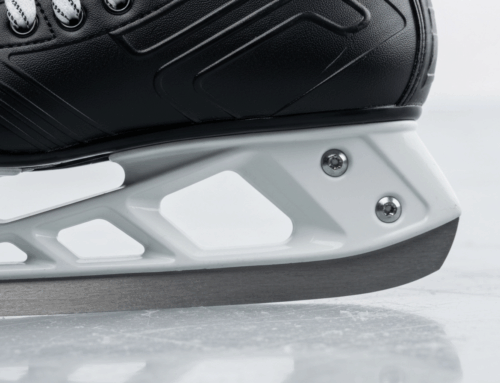Eco-Friendly Ice Hockey: Building a Sustainable Future for the Game
Skating Towards a Greener Future: Why Sustainability Matters in Ice Hockey
Ice hockey, a sport celebrated for its speed, skill, and thrilling physicality, relies heavily on a pristine ice surface. However, the energy-intensive nature of maintaining these frozen arenas, coupled with the production of specialized equipment, presents significant environmental challenges. The global push towards sustainability has brought the concept of Eco-Friendly Ice Hockey to the forefront, urging the sport to adapt and innovate for a greener future. This shift is not merely an environmental imperative but a crucial step towards ensuring the long-term viability and accessibility of the game for generations to come. Without conscious efforts, the very conditions necessary for ice hockey, such as stable winter climates, are at risk due to climate change.
The Environmental Footprint of Ice Hockey: Energy, Equipment, and Water
The environmental impact of ice hockey extends across several key areas. Foremost among these is the immense energy consumption required to create and maintain ice rinks. Refrigeration systems demand constant power to keep ice at optimal temperatures, often relying on traditional refrigerants with high global warming potential. Lighting, heating, and ventilation systems within vast arena spaces further contribute to a substantial carbon footprint. Beyond energy, water usage is another critical factor. Thousands of gallons are needed to form and resurface the ice, and inefficient practices can lead to considerable waste.
Equipment manufacturing also plays a role. Traditional hockey gear, from sticks and pads to skates, often utilizes synthetic materials like plastics, composites, and foams that are difficult to recycle and have long decomposition times. The production processes for these materials can be resource-intensive and generate considerable waste, adding to the sport’s overall environmental burden.
Eco-Friendly Ice Hockey: Innovations in Rink Design and Operation
The good news is that significant strides are being made in developing eco-friendly solutions for ice rinks. Modern facilities are embracing sustainable design and operational practices to drastically reduce their environmental impact. Key innovations include:
- Advanced Refrigeration Systems: Shifting from outdated refrigerants to more environmentally benign options like ammonia or CO2, which are significantly more energy-efficient and have lower environmental impacts.
- Heat Recovery Systems: Capturing waste heat generated by refrigeration units and repurposing it to warm other parts of the facility, such as locker rooms or spectator areas, reducing reliance on external heating.
- Renewable Energy Integration: Installing solar panels on arena roofs or purchasing renewable energy credits to power operations, significantly lowering greenhouse gas emissions.
- Efficient Water Management: Implementing technologies that recycle meltwater for resurfacing, utilizing rainwater harvesting, and optimizing water treatment systems to minimize consumption.
- LED Lighting: Replacing traditional, high-energy lighting with LED systems that consume less electricity and have a longer lifespan, reducing both energy use and waste.
- Insulation and Building Materials: Constructing rinks with advanced insulation and sustainable building materials that improve thermal efficiency, reducing the energy needed for heating and cooling. Some rinks even explore using recycled materials in their construction.
- Synthetic Ice: For training centers or smaller venues, synthetic ice offers an alternative that requires no water or refrigeration, significantly cutting energy and water use.
Greening the Gear: Sustainable Materials and Production in Hockey Equipment
The push for sustainability extends to the very tools of the game: hockey equipment. Manufacturers are increasingly exploring innovative, eco-friendly materials and production methods to reduce the environmental footprint of sticks, skates, protective gear, and apparel. This includes:
- Recycled and Bio-Based Materials: Integrating recycled plastics, textiles, and even natural fibers into protective padding, jerseys, and other gear components. Some companies are experimenting with plant-based composites for stick manufacturing.
- Durable and Repairable Designs: Designing equipment for longevity, reducing the need for frequent replacements. Emphasis is placed on components that can be repaired or replaced rather than discarding the entire item.
- Reduced Waste in Manufacturing: Implementing lean manufacturing processes to minimize material waste during production and exploring closed-loop systems where waste materials are reused or recycled.
- Ethical Sourcing: Ensuring that raw materials are sourced responsibly, with consideration for ecological and social impacts throughout the supply chain.
While the industry still has a long way to go, these steps represent a growing commitment to more responsible equipment production.
Beyond the Ice: How Players, Teams, and Fans Drive Sustainable Practices
Sustainability in hockey isn’t just about infrastructure and equipment; it’s also about collective action. Players, teams, and fans all have a role to play in fostering a greener game:
- Player Advocacy: Athletes using their platforms to raise awareness about climate change and promote sustainable practices within the sport and beyond.
- Team Initiatives: Professional and amateur teams adopting green practices in their operations, from waste reduction and recycling programs at arenas to promoting public transportation for games. Many teams now have dedicated sustainability officers or committees.
- Fan Engagement: Encouraging fans to participate in recycling efforts at games, use reusable water bottles, and support teams and brands committed to sustainability. Fan-led initiatives can also pressure organizations to adopt greener policies.
- Community Programs: Organizing clean-up days, tree-planting events, or educational workshops to engage local communities in environmental stewardship.
These collaborative efforts create a ripple effect, extending the impact of eco-conscious hockey far beyond the rink.
The Benefits of a Greener Game: From Cost Savings to Community Health
The transition to Eco-Friendly Ice Hockey offers a multitude of benefits that extend beyond environmental protection:
- Reduced Environmental Impact: Directly lowers greenhouse gas emissions, conserves water, and minimizes waste, contributing to a healthier planet.
- Cost Savings: While initial investments in green technologies can be significant, the long-term operational savings from reduced energy and water consumption are substantial. This frees up resources that can be reinvested into player development or community programs.
- Enhanced Public Image: Teams and leagues that prioritize sustainability build a positive brand image, attracting environmentally conscious fans, sponsors, and partners. This also positions hockey as a leader in corporate social responsibility.
- Healthier Communities: Cleaner air and water, resulting from reduced pollution, directly benefit the health of players, staff, and surrounding communities. Better indoor air quality in arenas can also improve athlete performance and spectator comfort.
- Innovation and Job Creation: The demand for sustainable solutions drives innovation in engineering, materials science, and clean technology, potentially creating new jobs within the sports industry.
- Resilience for the Future: By adapting to climate realities, hockey ensures that it can continue to be played in traditional outdoor settings and that indoor facilities remain viable and affordable to operate.
Building a Sustainable Future: The Role of Training Centers and Community
Training centers, like Charlotte Hockey Lab, play a crucial role in building a sustainable future for ice hockey. While focused on honing player skills, these facilities can also serve as models for eco-conscious operation. By implementing energy-efficient systems, responsible waste management, and promoting environmental awareness among young athletes, they instill values that extend beyond the ice. Furthermore, these centers often act as community hubs, providing an ideal platform to educate players, parents, and fans about the importance of sustainability in sports and everyday life. The commitment to developing not just skilled players, but also environmentally responsible citizens, is a powerful contribution to the game’s longevity.
Preserving the Passion: A Call to Action for Eco-Conscious Hockey
The journey towards a truly Eco-Friendly Ice Hockey is ongoing, requiring continuous innovation, collaboration, and commitment from all stakeholders. From the smallest youth leagues to professional organizations, every action, no matter how small, contributes to the larger goal. By embracing sustainable practices in rink design, equipment manufacturing, and daily operations, and by fostering a culture of environmental responsibility among players and fans, we can ensure that the exhilarating sport of ice hockey continues to thrive for generations to come, played on a planet that is as vibrant and healthy as the game itself.
Visit our Contact Us page.

We use only the finest ingredients to produce stellar tastes.












